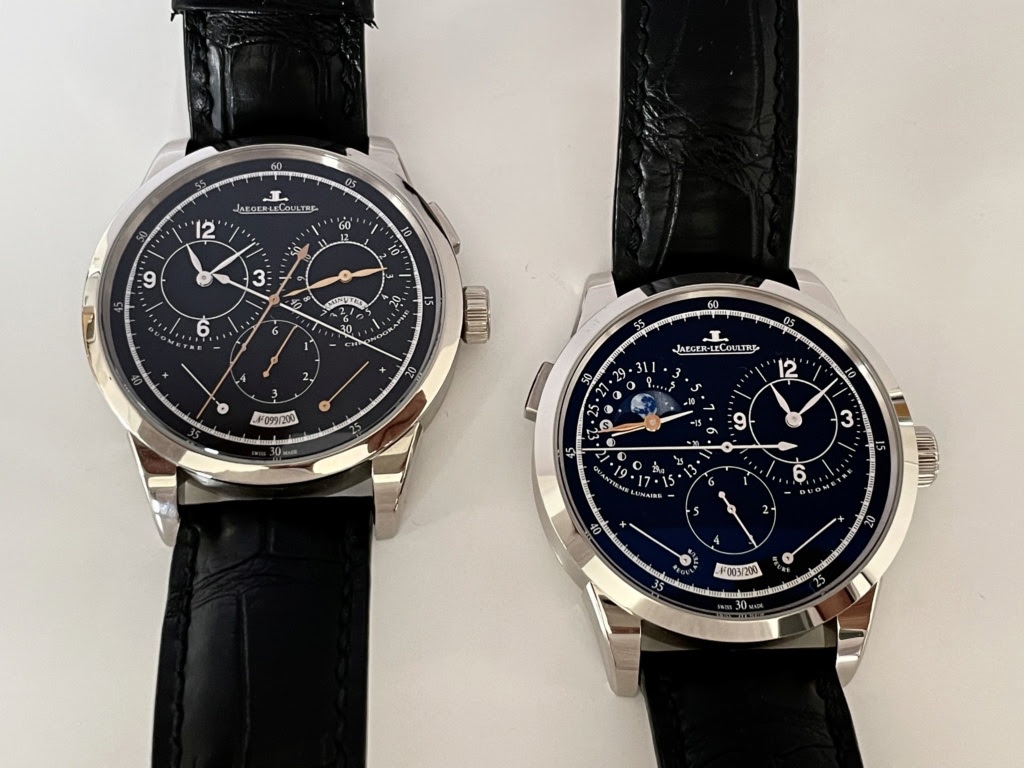
Duomètre : PART I - Past and present

Hello everyone.
The "Precision Maker" of the "Watchmaker of Watchmakers" I coming soon...
But what should we expect from the Maison that dreams of being Grande...
at least a Duomètre... probably...
There are still few days to wait... after years of waiting... as from memory, this line was launched in 2007... some time ago or a certain time...
Origin and concept:
At the time, the innovation of the Duomètre lay in the complication's autonomy regarding the rest of the watch.
The idea of two barrels (one for the complication and one for the rest) arose from the quest for greater precision (this is probably what the teaser's marketing phrase "Précision Maker" refers to).
The day, the date, the month, complications... it's all about cogs, adjustments, friction, energy... But creating elaborate complications is generally done at the expense of precision. It's a physical fact: the more cogs there are, the more friction there is, the more energy is required... and consequently, the more energy the spring barrel has to provide...
Some would say that all you need to do is add a spring with more tension... but Mother Nature isn't so easily tamed. Roughly speaking, the more energy a spring provides, the greater the difference in energy - and therefore precision - between the moment when it is fully wound and the moment when it is less wound...
One of the solutions found by watchmakers has been to multiply the number of barrels... This is the case, for example, of the Reverso Grande GMT (Model: 240.8.18 - Q3028420) or the fantastic Master Grande Tradition Minute Repeater Titanium (Model: 151.T.67). The result is a greater power reserve (8 days on the former and 15 days on the latter)... bearing in mind that on the MMR... there's a "Torque/couple" function, which consists of turning the crown a few times to restore torque and therefore precision to the watch when it's not wound very much...
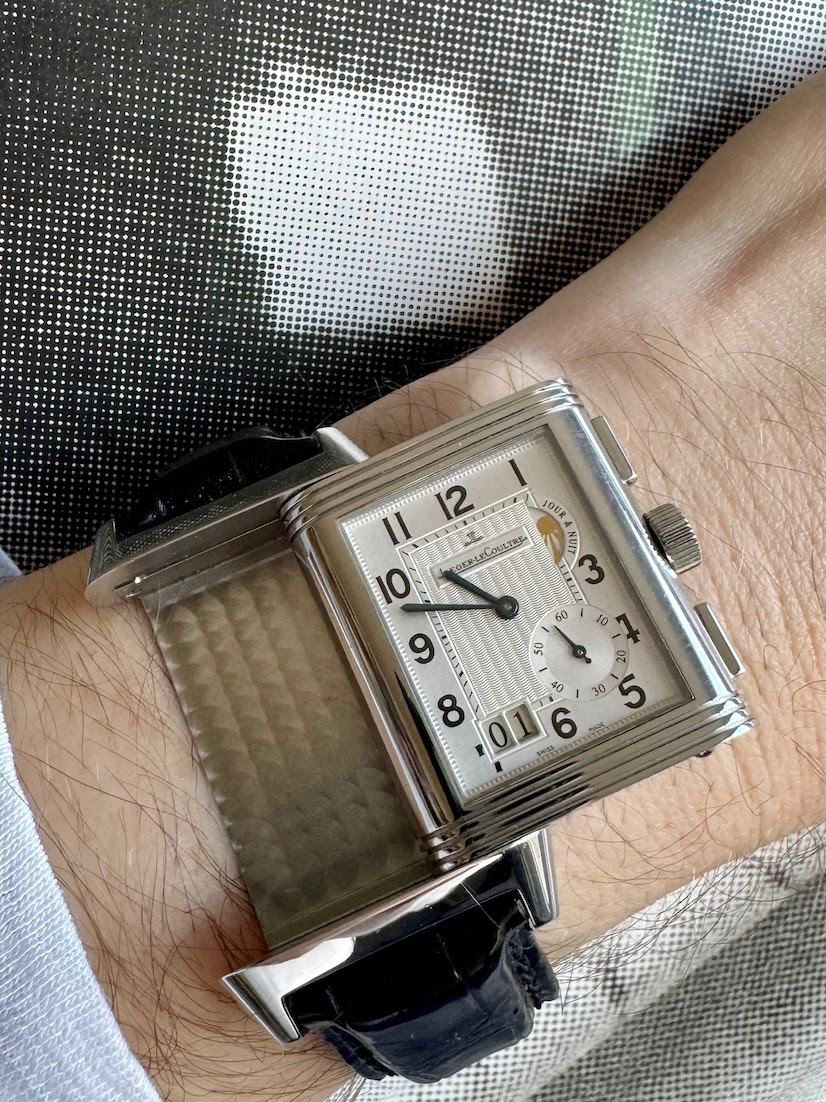
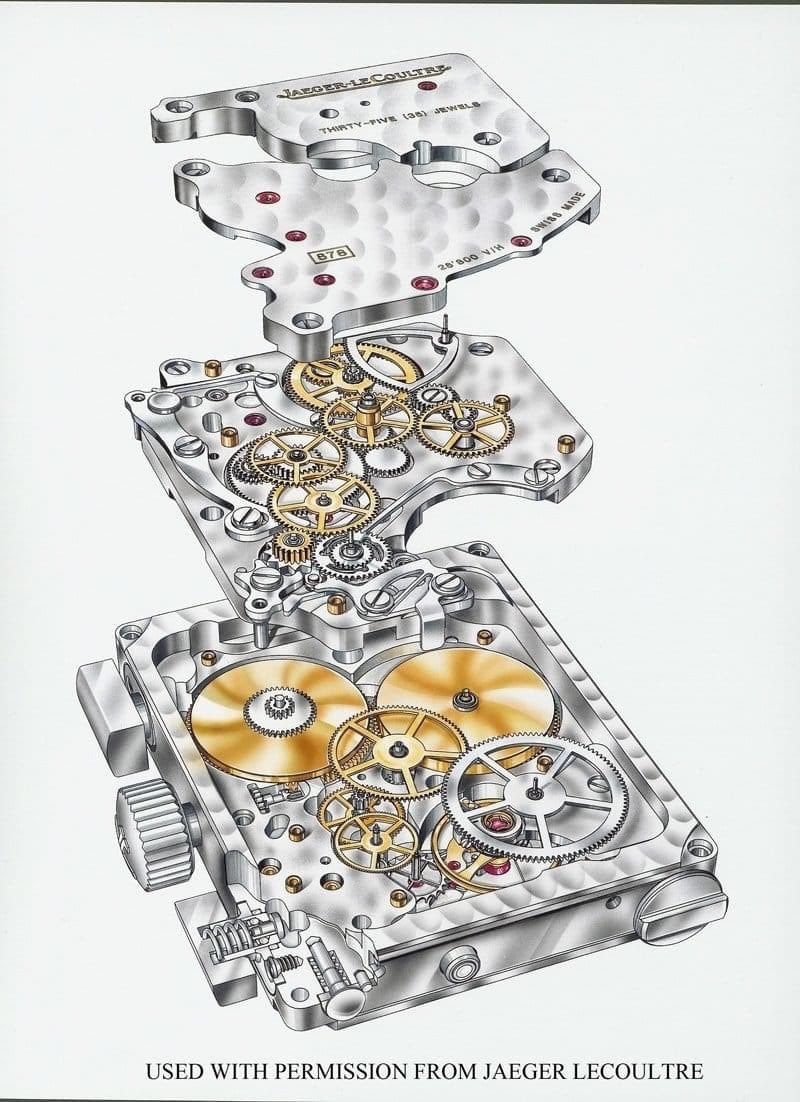
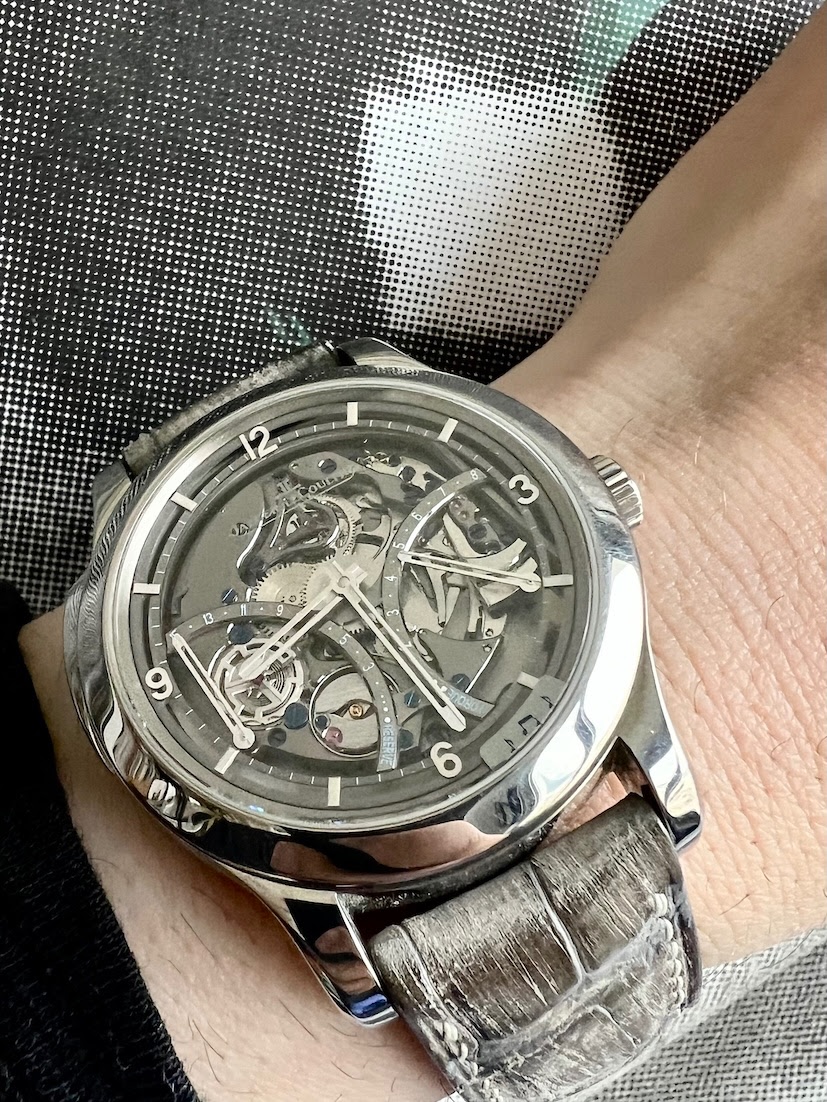
It's clear that the solution of two associated barrels provides more power reserve and alleviates certain problems... but not that of precision when complications or gears are added, in particular a chronograph which is not permanently engaged and whose start-up - by its nature - disturbs the precision adjustment constants. The reason for this is that a classic watch shares everything: its regulating organ, its barrel and, between the two, the gear train, are pooled together, offering time measurement for the former and energy for the latter.
This gave rise to the idea of Duomètres, models that do not share energy, which is specific to each complication. All Duomètres have two independent barrels, wound by a single crown: each powers a part of the movement, a complication. This way of arranging the movement and thinking about the complication - which took the name of " Dual Wing " (Calibre 380 then 381, 382, 383, ...) - with a function engraved on each barrel, was developed with the underlying idea that each complication should always have its own, and therefore regular, flow of energy.
Calibre 380 (crédit Watchbase) :
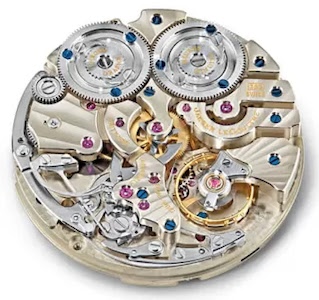
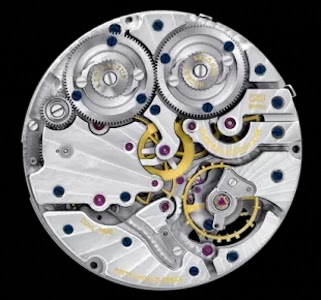
Calibre 382 (crédit Watchbase) :
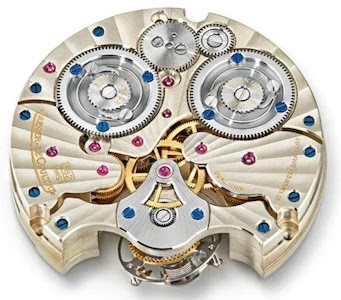
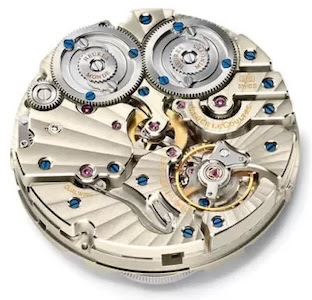
The design and evolution of the line:
The architecture of the Dual Wing movement, not without consistency, resulted in an elegant dial divided vertically (and horizontally on certain models) into two symmetrical parts.
In terms of finishing, which I personally consider to have been meticulous (although considered perfectible by some), it was remarkable and in any case far superior to what Jaeger LeCoultre was doing at the time. (It has improved since then and the work accomplished in this respect is to be congratulated, even if I personally find that it makes the new models less poetic, more clinical/industrial.) In any case, given the price positioning at the time, it made this model competitive to say the least (with Patek on the dial, it's likely that the launch price would have been much higher).
In terms of complications, they were varied:
- SIHH 2007: A chronograph with lightning seconds (1/6th), which was finally natural and logical for the Duometre architecture;
- Autumn 2009: The Duomètre à Grande Sonnerie, which was initially called Hybris Mechanica before it became a complete range; a model that was one of the most complicated in watchmaking (5 years of development - 1300 components - more than a dozen patent applications) with a barrel for timekeeping functions: hour, perpetual calendar, etc... and another for a grand sonnerie with chimes on four gongs; watch sold in a "box" (limited to 30 pieces) with two other major complications developed by Jaeger-LeCoultre: the Gyrotourbillon and the Reverso à Triptyque - together having been named "Hybris Mechanica 55" ;
- SIHH 2010 : A lunar calendar with lightning seconds that became "Diablotine" - one of Jaeger LeCoultre's most precise watches thanks to a barrel dedicated exclusively to the regulator.
- SIHH 2012: A Sphérotourbillon that followed in the footsteps of the Gyrotourbillon 1 & 2 and made a smashing entrance on the first day of the show, a watch that combines incredible aesthetics and great precision (First tourbillon watch that adjusted to the second. Until now, no tourbillon has been able to stop the seconds hand and bring it back to zero for ultra-precise adjustment, which is what this timepiece boasts: based on the flyback principle, a pusher placed at 2 o'clock brings the small seconds hand under the tourbillon back to zero, which can then resume its course without the regulating organ stopping. The result is maximum precision and optimal adjustment);
- SIHH 2013: A UTT (Unique Travel Time) which is a GMT with two dials side by side, one of which features jumping hours, with a precise setting that alleviates existing classic problems (changeover to winter time, existence of partial time zones - there are 13 in addition to the 24 main time zones, changes decided unilaterally by countries for political or historical reasons: Cf. Malaysia following its invasion by Japan).
- SIHH 2015: A Sphérotourbillon Moon, whose name is enough to define this poetic model.
The difference Duometre (crédit Jaeger LeCoultre)
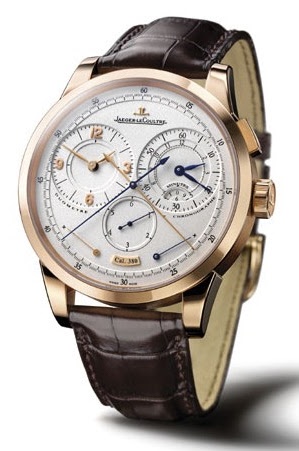
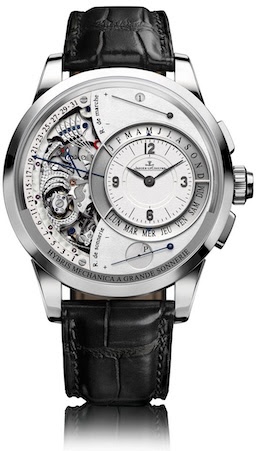
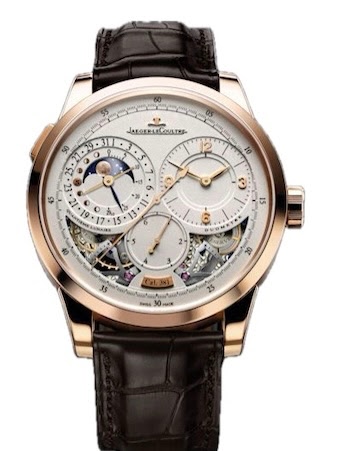
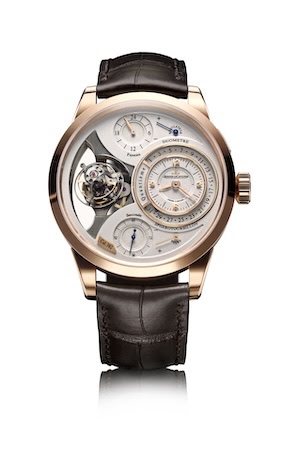
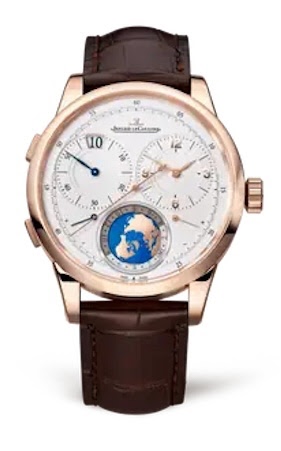
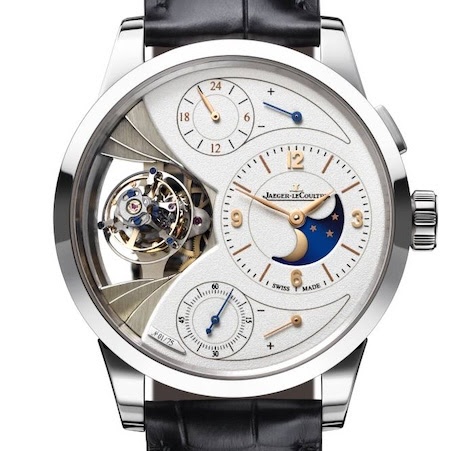
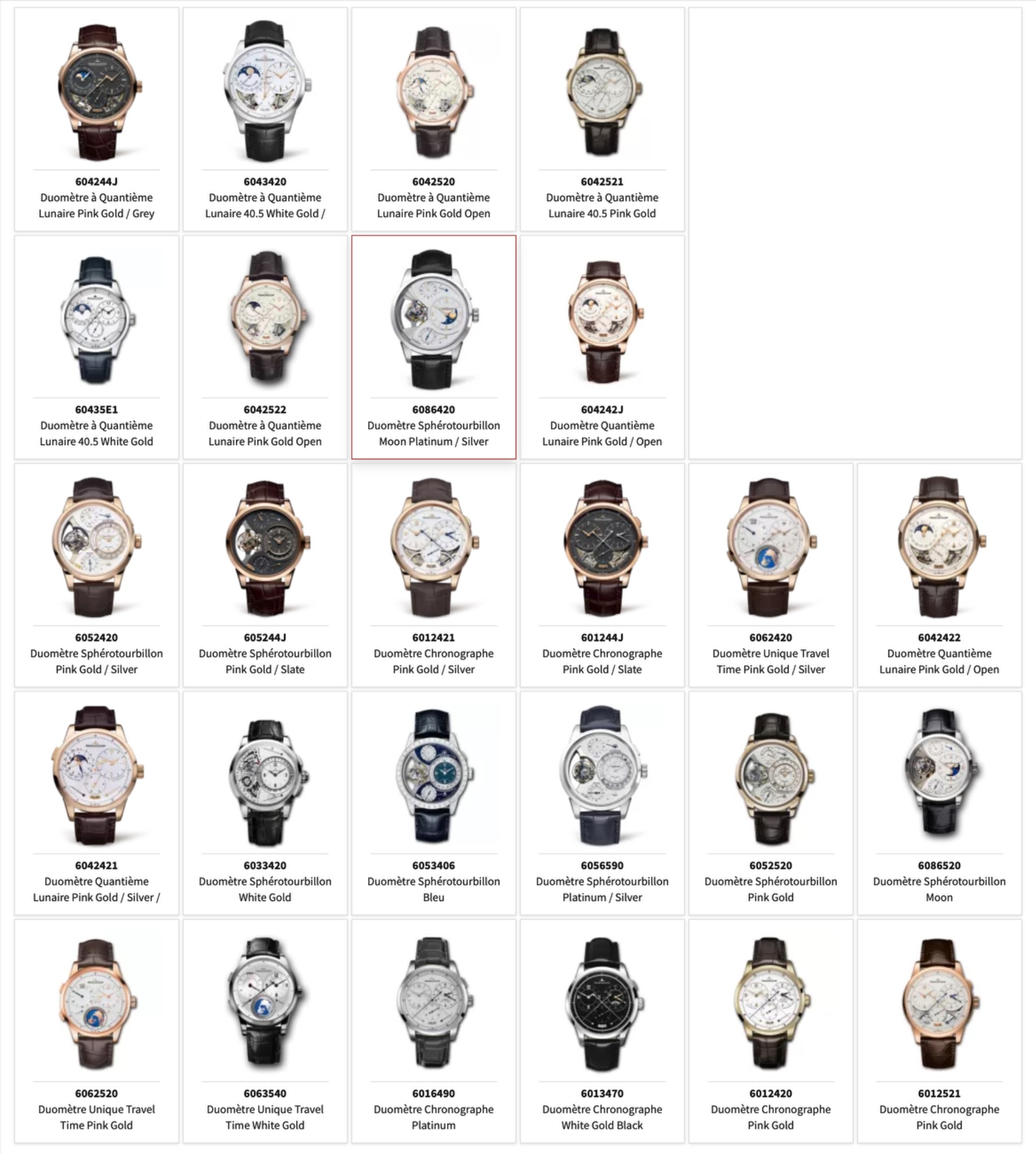
So it was a line to dream about (at any rate, personally it was and remains a watch that thrills me - even despite my setbacks with the brand, which unfortunately didn't take responsibility for a manufacturing problem).
I've owned several of them, and still have two left: a chronograph and a lunar calendar, which will probably remain in my Jaeger LeCoultre collection.
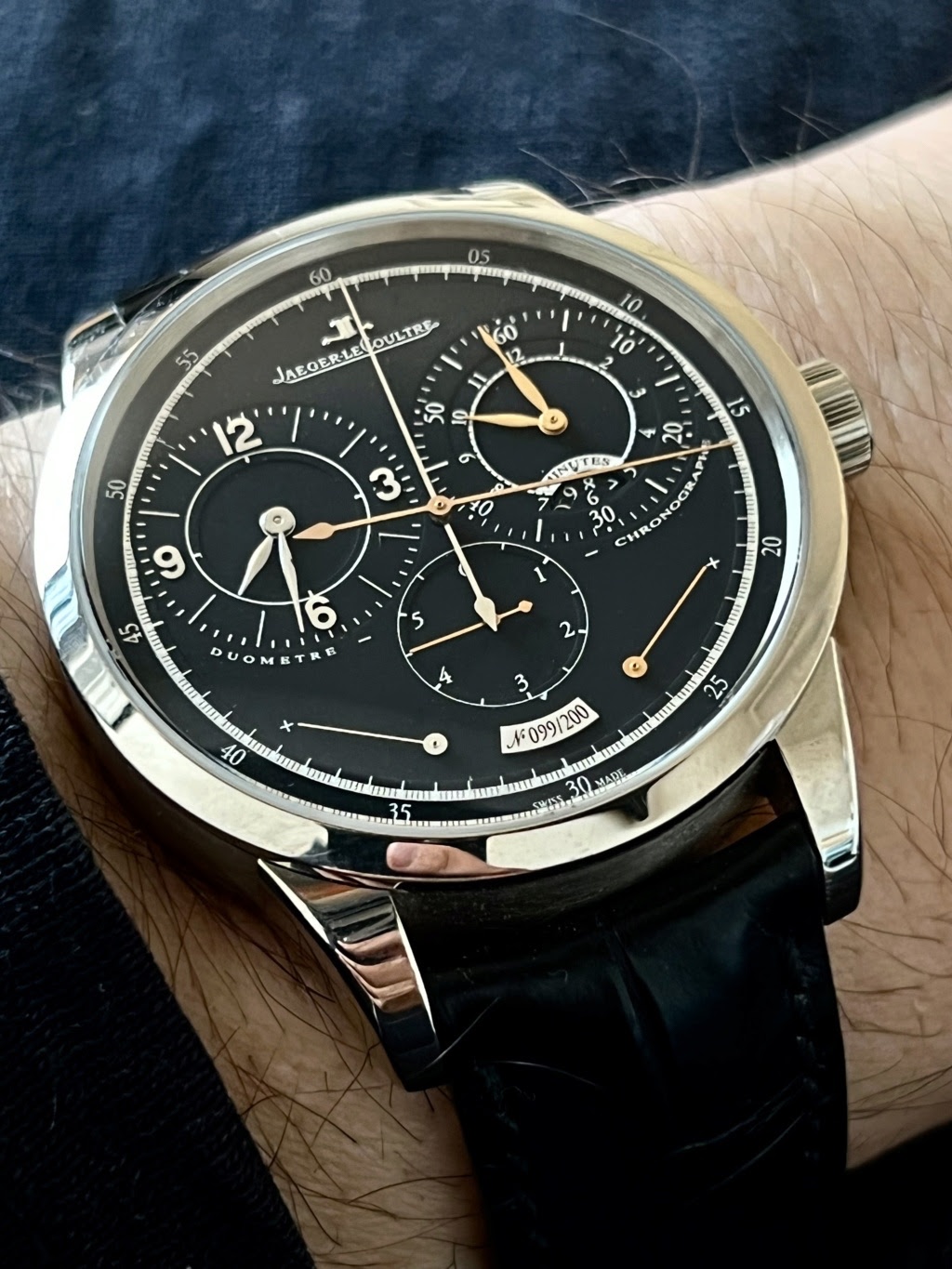
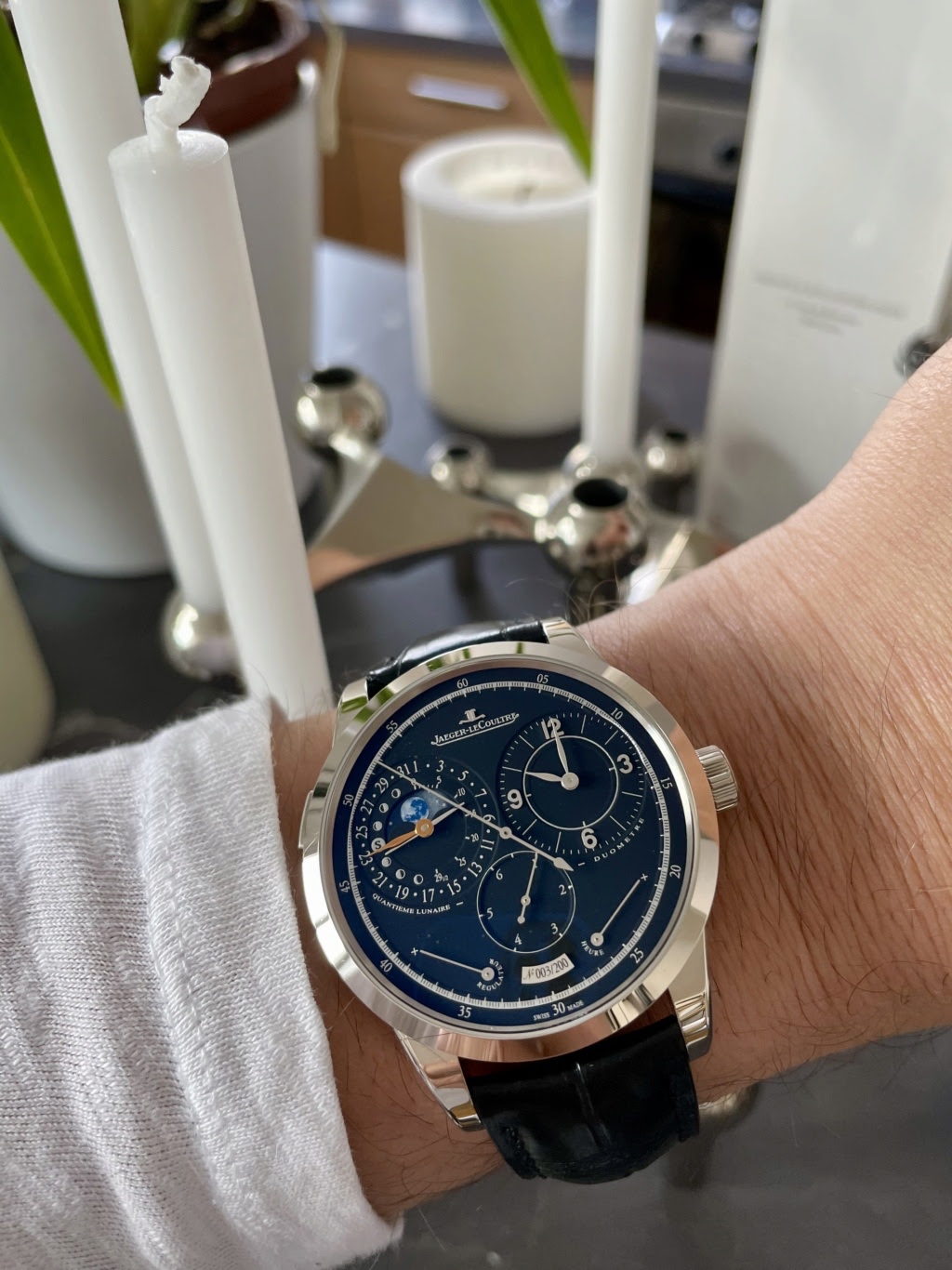

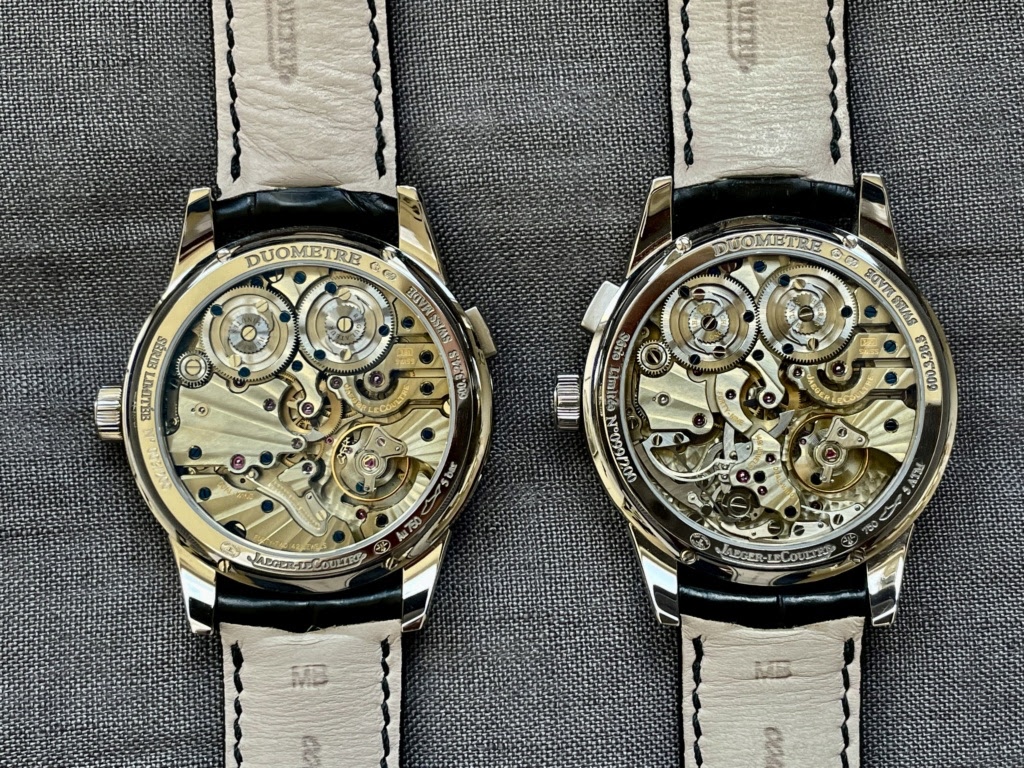
Unfortunately, the Jaeger LeCoultre manufacture has been asleep since 2015, and this sleep has not spared the Duomètres line, which has evolved very little since then.
Neither Daniel Riedo (July 2013 - March 2017), nor Geoffroy Lefebvre during his short stint (April 2017 - May 2018), were interested in the Duomètres, or even considered discontinuing the line.
During this long period, only a few enthusiasts and rare individuals within Jaeger LeCoultre supported the surviving Duomètres.
In fact, even Catherine Rénier, who has been at the helm since May 2018, hasn't done much for this model in 6 years!
Unfortunately, today, only 4 Duomètres are still for sale :
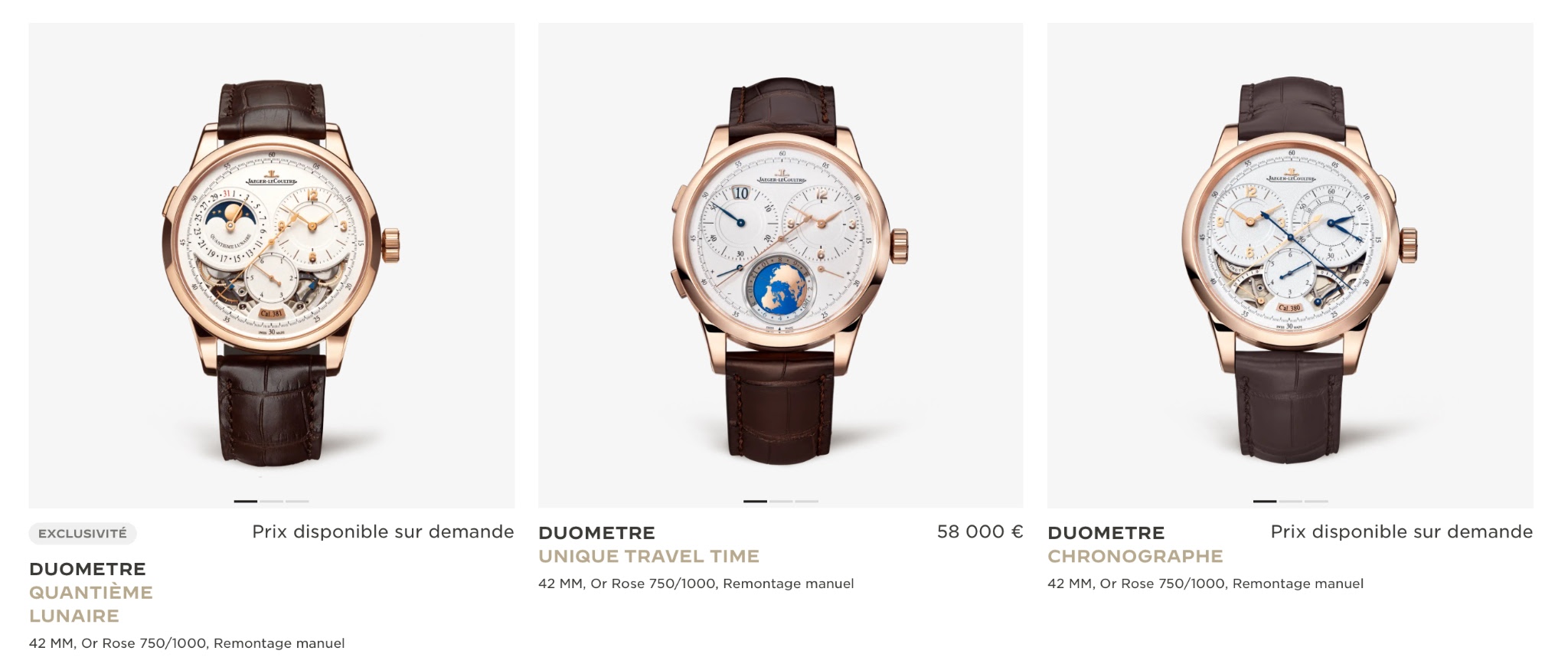
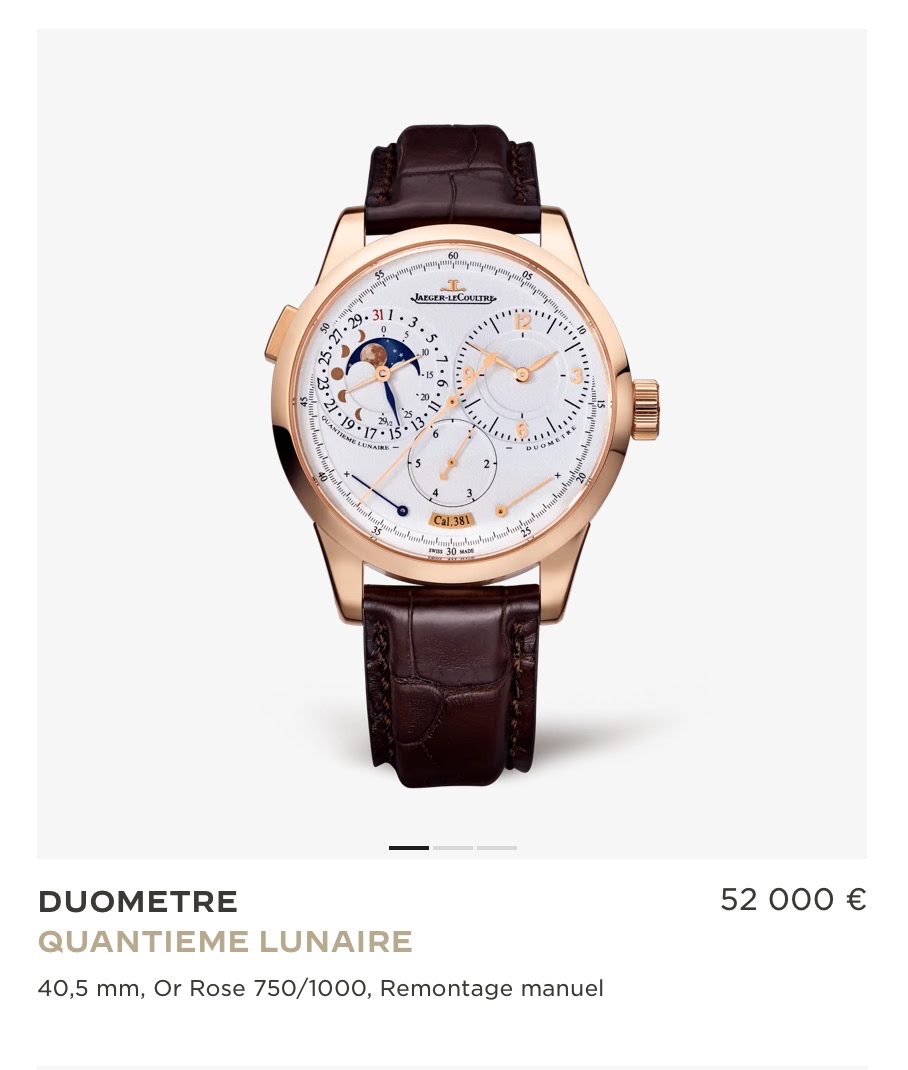










Next Article
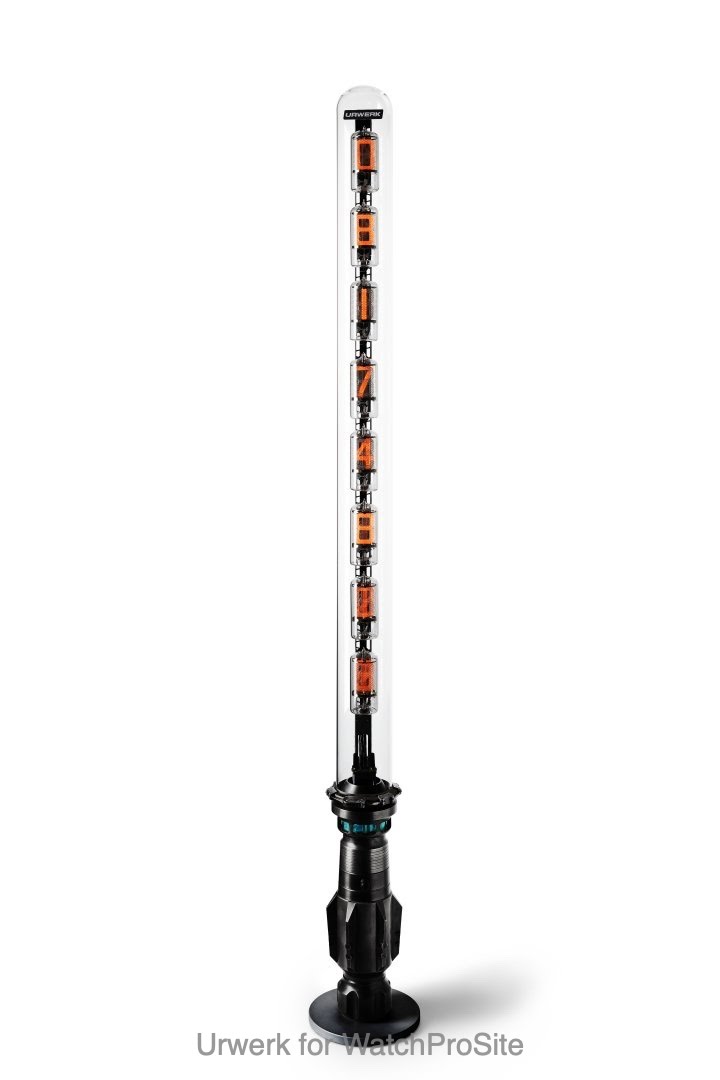

Urwerk: Spacetime Blade - a Nixie Clock By Urwerk!

© 2017 - WatchProZine